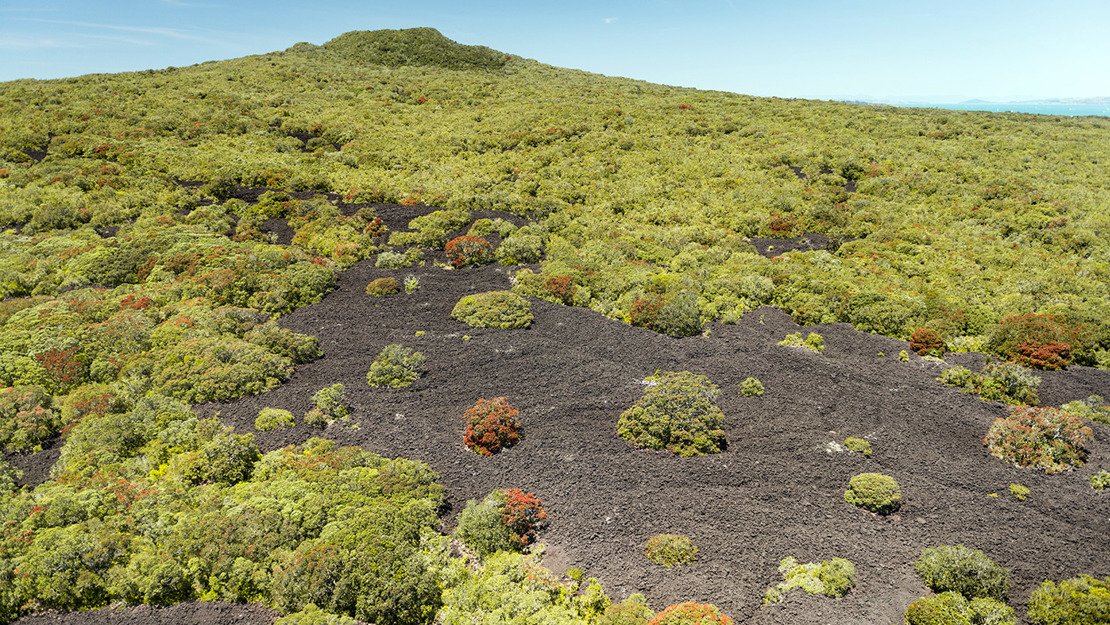Pōhutukawa scrub and forest ecosystem (VS1)
Regenerating ecosystem
About this ecosystem
Regenerating ecosystems occur following a natural disaster, such as a fire or volcanic eruption. They are an important step in vegetation succession and provide valuable habitats for many native plants and animals.
Pōhutukawa scrub forest cannot survive in frosts. While these forests are mostly made up of pōhutukawa trees, they also contain other less common species that can grow on lava or bare ground.
The best example of this ecosystem in Auckland is on Rangitoto Island.

Flora and fauna in this ecosystem
Pōhutukawa is the dominant regenerating species in this ecosystem. It tolerates a wide range of soil fertility and is able to rapidly colonise on bare ground. On Rangitoto Island, it has established on aa and pahoehoe lava.
Other species that grow in association with pōhutukawa forest include:
- kanuka and / or mānuka
- peperomia
- Kirk's tree daisy
- akepiro
- māpou.
Where pests have been controlled, a range of different types of skinks can be found in these forests as well as native birds including:
- red crowned kākāriki
- korimako (bellbird)
- ruru (morepork).
Threats to this ecosystem
This ecosystem is endangered.
Pōhutukawa is very palatable to a wide range of animals such as possums, wallabies, rabbits and deer. They can cause significant damage to this ecosystem. Pest management, particularly possum control, is essential for the protection of this ecosystem.



